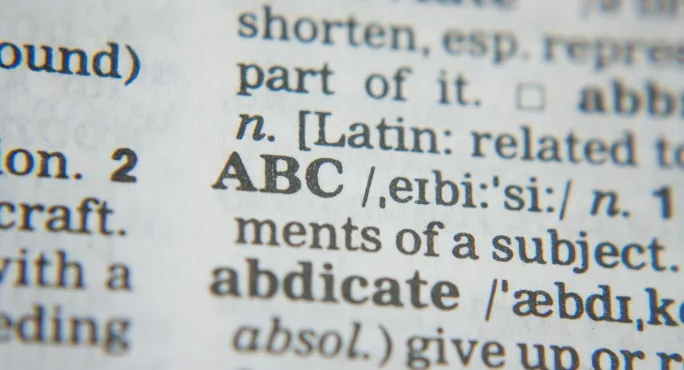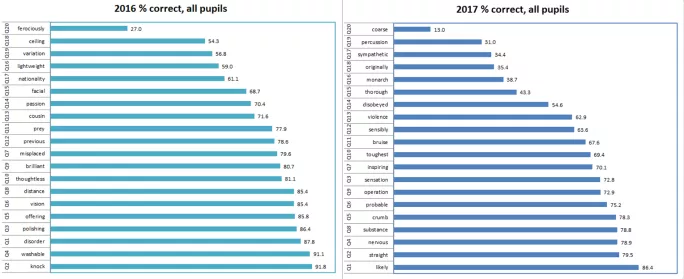Pupils taking the spelling section of this year’s Year 6 Sats spag test found the questions harder than their counterparts in 2016, figures obtained by Tes show.
Test scores obtained under a Freedom of Information request, show that last year 19 out of the 20 words on the spelling test were spelt correctly by more than half of pupils, there were nine words which more than 80 per cent of pupils could spell and two which more than 90 per cent got right.
But this year 14 out of the 20 words on the spelling test were spelt correctly by more than half of pupils and there was only one which more than 80 per cent of pupils could spell. There were no words which 90 per cent or more pupils spelt correctly.
Ranking the questions from the those with most correct answers to those with the least, shows that a smaller proportion of pupils got each question correct in 2017 than the corresponding question in 2016.
Pupils take two papers to test their spag (spelling, punctuation and grammar) skills. The first paper is a 50-question paper which covers grammar and punctuation.
Pupils then take a 20-question spelling test in which they are given an answer paper containing 20 sentences each with a missing word - their teacher reads out the missing word, then the full sentence, then the missing word again. Pupils have to fill in the missing word in their answer papers.
The word which pupils found most difficult in the 2017 spelling test was “coarse” which only 13 per cent of all pupils spelt correctly - meaning a maximum of 13 per cent of pupils could have achieved full marks. In comparison, the lowest proportion of correct answers in 2016 was for “ferociously” which 27 per cent of pupils spelt correctly.
The word which pupils found easiest in the 2017 spelling test was “likely” which 86.4 per cent spelt correctly. In 2016, 91.8 per cent spelt “knock” correctly.
Simon Kidwell, head of Hartford Manor primary, Cheshire, said that he didn’t feel the spelling test was significantly harder - but had concerns about how spelling was reported.
He said: “The question that challenged most children was the last question: ‘The prickly jumper was made from a coarse material’. Only 13 per cent answered the question correctly, and you could argue that many children have no concept of wearing a scratchy jumper, and therefore didn’t know which homophone to use.
“I still have serious concerns that children with profound spelling difficulties face a triple jeopardy of disadvantage. Poor spellers are penalised in the spelling test, the grammar and punctuation test, and the interim teacher assessment framework. Spelling is one part of the English curriculum and should be reported separately as a stand alone scaled score.”
More than half a million ten and 11-year-olds took the test in May and the interim results published in July revealed that more pupils passed the overall spelling, punctuation and grammar test than in the previous year - with 77 per cent reaching the expected standard across both papers in 2017, up from 73 per cent in 2016.
The DfE has been contacted for comment.
Source: DfE, FoI response





